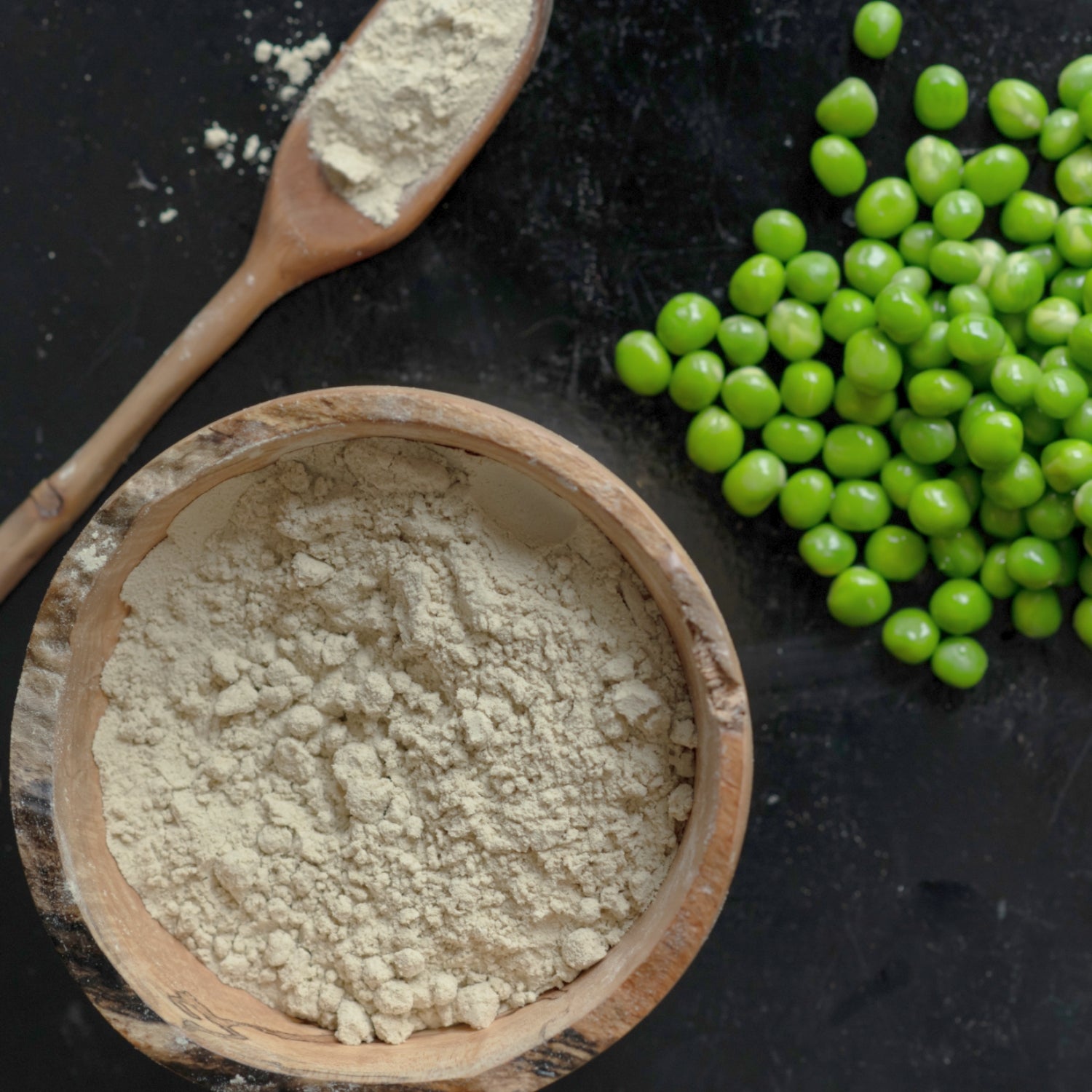According to the food pyramid of our elementary school days, protein is red, brown, and beige: meat, poultry, fish, eggs, beans, and nuts. But peas, in all their bright green glory, may have been misplaced the whole time.
Peas are legumes, like lentils and chickpeas, and they’re a standout source of protein. Lately, they’ve trickled into the protein supplement aisle and popped up in everything from vegan cheeses and meat substitutes to shakes, yogurt, milk, and bars. Here’s why.
What Makes Pea Protein So Special?
“Pea protein offers a good profile of micronutrients like manganese, folate, copper, phosphorus, vitamins B6 and B2, niacin, and molybdenum,” says , sports dietitian for the U.S. Olympic Committee and U.S. Rowing. They’re also high in fiber, which can aid in digestion and enhance fullness, she says.
Pea protein comes from yellow split peas, and unlike some other plant proteins, such as rice or beans, it’s a complete protein containing all nine essential amino acids.
It’s also a good option if you’re allergic or sensitive to whey or soy. It’s even an alternative protein source for vegans or vegetarians.
How Pea Protein Compares to Whey Protein
Peas are considered a low bioavailable protein source, meaning your body is able to absorb less protein from them than other forms of protein, but they may be easier on the stomach than whey, says , a nutritionist and assistant professor in nutrition and exercise science at Central Washington University.
If you opt for pea protein, you’ll need to take more of it than whey because pea protein contains less of the amino acid leucine per serving. Leucine is the most important amino acid for initiating and signaling pathways that stimulate muscle protein growth and recovery, Pritchett explains.
You need around 35 grams to get the same amount of leucine as you would from 20 to 25 grams of whey, Fusco says.
One study in the found that, despite their differences, pea and whey protein have roughly the same effect on muscle growth.
The Benefits of Supplementing With Pea Protein Powder
It’s preferable to choose whole food over supplements whenever possible, but athletes need ample protein distributed throughout the day, says Fusco. Sometimes, the best way to make that happen is with a portable, supplemental protein source—and pea protein powder is an excellent option.
While fresh peas are a good source of fiber, thiamine, folate, manganese, and vitamins A, C, and K, one cup of green peas contains 8.6 grams of protein, less than half of what you’d get from a serving of some of the most common pea protein powders. “You would have to eat a lot of peas to get the same benefits,” says Pritchett.
How to Choose a Protein Powder
“If you are going to use a protein powder, be sure to find a high-quality protein powder that has gone through third-party testing,” Fusco advises.
Look for the or logos, which ensure products are not contaminated. Garden of Life’s and Now Sports are two third-party-certified options.
Fusco emphasizes that variety is key to a healthy diet. So, even if you’re dietary restriction-free, it could be worthwhile to incorporate pea protein into your diet alongside more traditional sources of protein.


